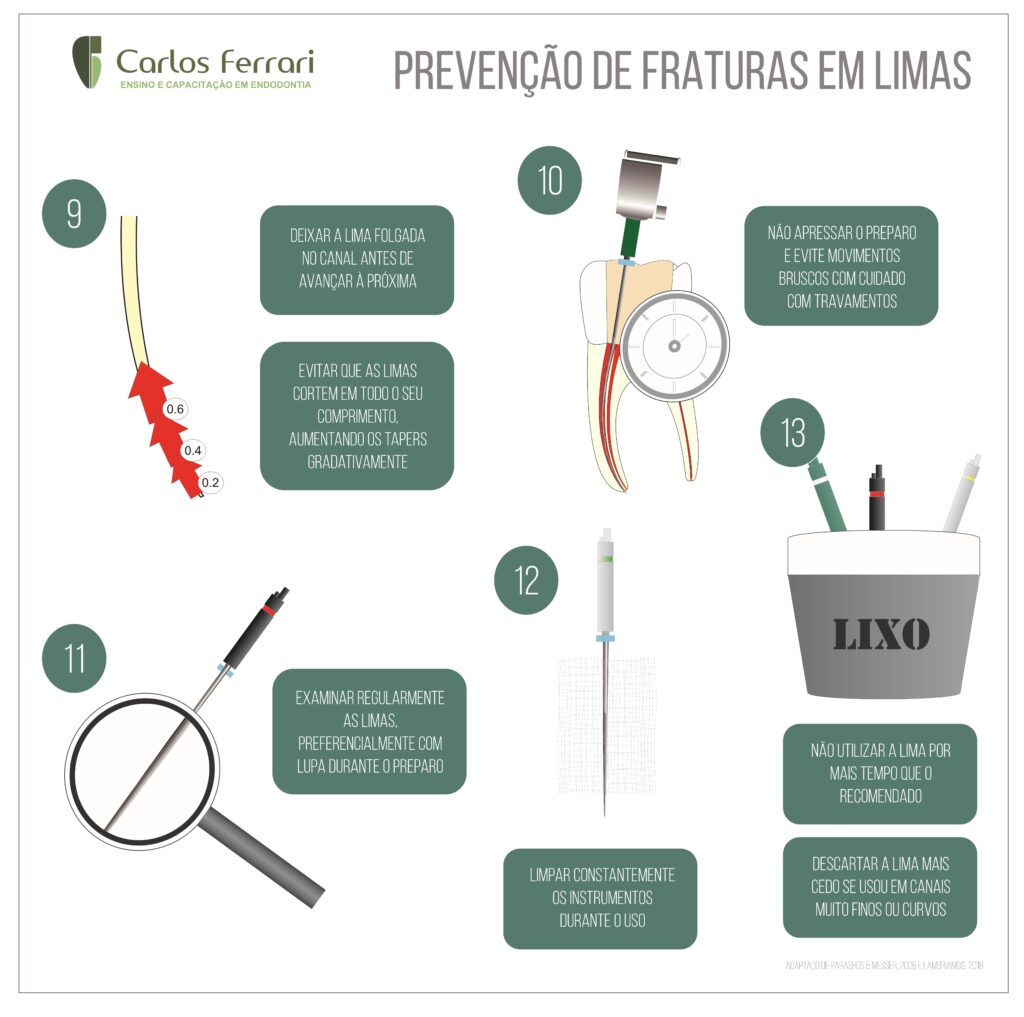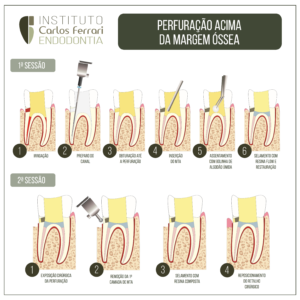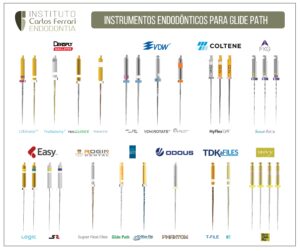Fratura de lima endodôntica.. A seguir, um guia, baseado na literatura, para prevenção.
A fratura de um instrumento endodôntico pode ter umimpacto negativo no prognóstico do tratamento, sobretudo por bloquear ou impedir o acesso à totalidade do canal radicular comprometendo a sua conformação e limpeza.
.
Apesar de ser um tema controverso, a revisão bibliográfica indica que o prognóstico associado à fratura de uma lima pode ter uma taxa de sucesso favorável na ordem dos 89%, tanto em casos de polpas vitais como necróticas. Casos emque já existe uma lesão periapical prévia, apresentam umpior prognóstico, verificando-se uma descida até aos 47%na taxa de sucesso.
A abordagem de situações clínicas com instrumentos fraturados pode ser feita por via cirúrgica ou por via convencional através do tratamento endodôntico não cirúrgico, tentando-se a remoção ou o bypass dos instrumentos. A via de abordagem é normalmente a mais recomendada. É importante ter em conta que se trata de um processo difícil que requer, além dos conhecimentos e experiência do profissional, materiais específicos, nomeadamente microscópio, para que se possa adoptar um procedimento o mais seguro possível.
A avaliação do caso deve ser feita de forma rigorosa e são conhecidos alguns fatores que podem influenciar a possibilidade de remoção do instrumento e que são importantes de considerar, nomeadamente. (Prof. Carlos Morais e Miguel Stanley).
Os instrumentos endodônticos, sejam limas manuais, limas rotatórias ou reciprocantes ou lentulos e instrumento de irrigação e brocas degates ou Largo, podem fraturar no interior do canal radicular em qualquer região, apical, média e cervical. Se a velocidade, torque e outros parâmetros como tipo e sentido de rotação não forem respeitados, além da incorreta utilização, haverá risco da separação do instrumento, muitas vezes de difícil retirada.
Em caso de insucesso em qualquer técnica é indicado então a cirurgia paraendodôntica para resolução via ápice, retirando o instrumento e realizando retropreparo e retroobturação.







